Lily Salter's Blog, page 231
November 23, 2017
Turkey may bring more trust to your Thanksgiving table
‘Tis the season for giblets, wattles and snoods – oh my. On Thanksgiving and Christmas, Americans consume about 68 million turkeys – one for about every five of us. In fact, 29 percent of all turkeys gobbled down in the U.S. are consumed during the holidays.
And where turkey is being eaten, there is inevitably talk of tryptophan – a naturally occurring chemical found in turkey and other foods. This building block of protein often takes the blame for eaters feeling sleepy soon after the Thanksgiving meal.
Science has cleared tryptophan, though – it’s not the culprit when it comes to drowsiness after the feast. There are far more important factors leading to those post-turkey comas, not least of which is my Uncle Clarence’s story about parking at the airport. Add that to free-flowing booze combined with a load of carbohydrates followed by plenty more booze and you have a foolproof recipe for dozing off on the couch. Turkey, chicken, lamb and beef all contain roughly the same amount of tryptophan – ranging from 0.13-0.39 grams per 100 grams of food – yet the sleepiness myth has never surrounded those other foods.

Overeating and drinking are more likely at the root of your post-feast nap.
Brent Hofacker/Shutterstock.com
So tryptophan is off the snooze-inducing hook. But researchers in the Netherlands suggest it does have a different psychological effect: They’ve discovered that doses of tryptophan (chemically known as L-tryptophan and abbreviated TRP) can promote interpersonal trust – that feeling you get when you look somebody in the eye, shake her hand and think, “I can cooperate with this person and she would reciprocate.”
In a study published in the journal Psychological Science, pairs of volunteers were each given an oral dose of 0.8g of TRP or a placebo. For comparison, a 100g standard serving of turkey about the thickness of a deck of playing cards contains about 0.31g of tryptophan.
Each duo then sat in separate cubicles and played a game where one person (the truster) was given US$7 and had to decide how much to transfer to the other person. The transferred money was then multiplied by three and the trustee could give back part of the tripled money.
The more money you’re willing to give away in the first place, the greater your return in the end – but you have to trust the other person to cooperate. A very simple and profitable game if played right.
The researchers found that the TRP group gave $4.81 on average and the placebo group offered only $3.38. This is a sizable 42 percent increase in transferred money between the two groups.
So what’s going on? Here’s the brain science behind how the tryptophan-trust connection works.
TRP is an essential amino acid found in many foods including eggs, soybeans, chocolate, cheeses, fish, nuts and, of course, turkey. The brain region associated with interpersonal trust – known as the medial prefrontal cortex – is powered by the neurotransmitter serotonin. Neurotransmitters are chemical messengers found throughout the body that transmit signals from one nerve cell to another.
Our bodies synthesize many neurotransmitters from simple amino acids which are readily available in our food and can be quickly converted in a small number of biosynthetic steps. The neurotransmitter serotonin is controlled in part by the release of TRP. This means that as you increase levels of TRP you’re able to release serotonin in the brain region specially designed to process trust. Think of a flashing neon sign that reads “trust this person, trust this person.”

A plate of turkey won’t convince you to buy into Cousin Gerald’s pyramid scheme.
Rawpixel.com/Shutterstock.com
Keep in mind, however, that our decisions to trust or not to trust do not rely solely on ingesting TRP. In the real world we take into account personality factors, how well we know someone, previous cooperation with that person, tone of voice, eye contact, body language and so on. These all have a hand in shaping the conscious and unconscious rules that govern our pro-social behavior and trust preferences.
 So this holiday season, eat your turkey (or salmon or cashews or cottage cheese or chocolate) and remember that few things are more pleasurable than the joy that comes from sharing a holiday meal with loved ones. Science shows us that tryptophan can promote social bonding, but there still is no substitute for giving thanks. Trust me.
So this holiday season, eat your turkey (or salmon or cashews or cottage cheese or chocolate) and remember that few things are more pleasurable than the joy that comes from sharing a holiday meal with loved ones. Science shows us that tryptophan can promote social bonding, but there still is no substitute for giving thanks. Trust me.
Kevin Bennett, Assistant Teaching Professor of Psychology, Pennsylvania State University
10 Bluetooth Speakers & Headphones You Can Already Get For Black Friday Pricing
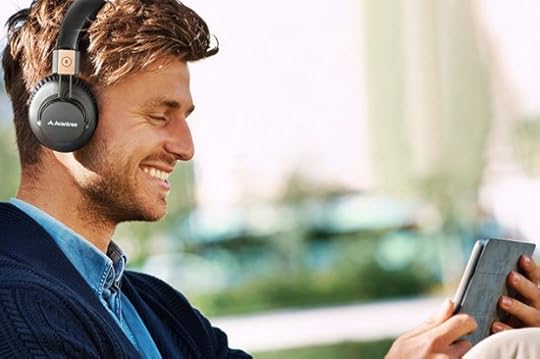
All music lovers rejoice: we’ve collected ten incredible speakers and headphones you won’t need to break the bank on, and won’t need to wait in massive Black Friday lines for. Best of all, you can still enjoy the same unreal Black Friday discounts — so go ahead, turn the volume up, let the music play and drown out the sound of all your relatives asking you deeply embarrassing questions in front of your friends.
Plus, use the code BFRIDAY20 for an extra 20% off the sale prices listed!

Bringing a revamped model to the best-selling Pro model, these FRESHeBUDS Ultra Earbuds boast better drivers, speaker cones, microphone, a stronger magnet and longer battery life. Best of all, they’re still water and sweat resistant and automatically pair with your phone when pulled apart.
Buy now: Get these high-quality buds for $49.99, or 66% off the usual price of $149.99.
2. HomeSpot Rugged Waterproof Bluetooth Speaker

If you’re looking for a Bluetooth speaker that can keep up with all your adventures, this HomeSpot Rugged Waterproof Bluetooth Speaker deflects dust, dirt, and water and is coated with a rubberized surface. That means its impact-resistant enough that you can take your tunes with you without worry (and it’s shockproof too).
Buy now: Get this rugged speaker for $29.99, or 62% off the usual price of $79.99.
3. HBQ i7 Twins True Wireless Earphones

These lightweight HBQ i7 Twins True Wireless Earphones aren’t just extremely comfortable — they use Bluetooth 4.2 to deliver high-quality, lag-free connections. Plus the high-performance battery lasts for four to five hours of playtime, meaning you’ll want to leave them in all day long.
Buy now: These hands-free buds are $29.99, or 40% off the usual price of $49.99.
4. Avantree AptX Low Latency Bluetooth Headphones
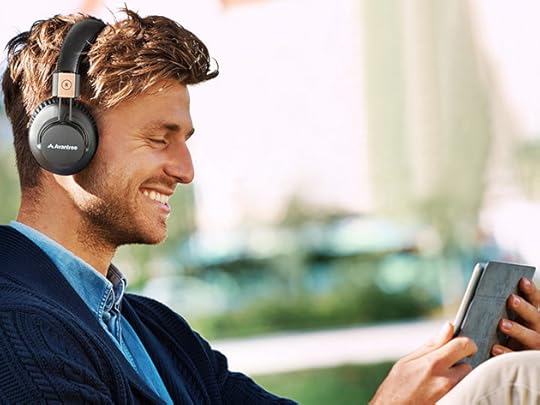
You don’t always need to be blasting music through your headphones: these Avantree AptX Low Latency Bluetooth Headphones are perfect for everything from watching movies to taking calls. The crisp treble, deep bass and superb clarity combined with lag-free superior aptX audio technology mean you get a perfect listening experience, every time.
Buy now: Get these high-quality headphones for $69.99, reduced from $99.99.
5. 1Voice Bluetooth 100% Wirefree Earbuds
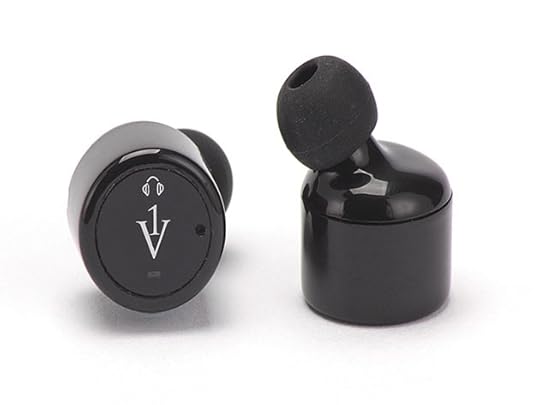
Move around freely with these 1Voice Bluetooth 100% Wirefree Earbuds — they’re free of any cord, so you can move around unfettered, whether you’re working out or just trying to find those papers in the office on your weekly conference call. They fit snugly in your ear without falling out, plus you can play them for four hours without stopping.
Buy now: Get these wire-free buds for $32, or 73% off the usual price of $119.
6. ALL-Terrain Bone Conduction Bluetooth Headphones
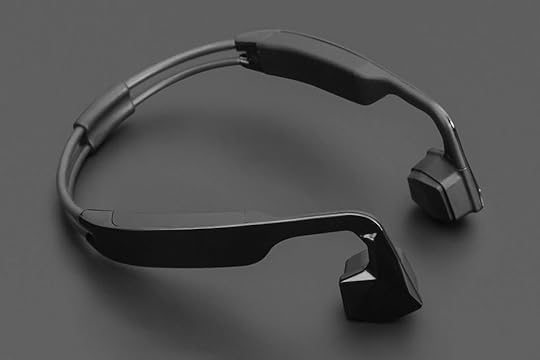
Want to go a step above wireless? Check out these ALL-Terrain Bone Conduction Bluetooth Headphones: they’re a set of rugged, water-resistant headphones that utilize innovative bone conduction technology to bypass your eardrum, feeding sound directly into your inner ear through vibration. They sit in front of your ears, so you stay tuned into the world around you — while still enjoying your favorite tunes.
Buy now: Get these innovative earphones for $60, or 59% off the usual price of $149.95.

Sometimes bigger really is better: this XXL Shower Speaker has an upgraded audio chipset that pumps out 3 watts of sound while making and receiving crystal clear calls — plus it’s twice the size and power of the standard shower speaker. It even includes a newly enlarged battery that only needs to be charged once a month.
Buy now: Get this XL speaker for $19.99, reduced from the original price of $39.99, or 80% off the usual price of $99.99.
8. DASH A: World’s Flattest Portable Speaker
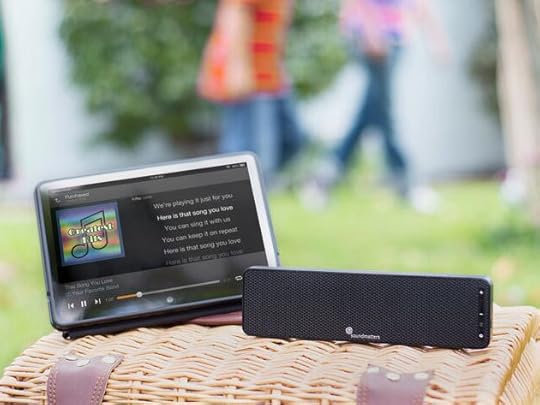
Think of the DASH A: World’s Flattest Portable Speaker with an incredibly slim, ultra powerful sound bar – it delivers ten hours of flawless playback on each charge and emits every subtle auditory detail. Take it with you anywhere, whether you want to watch a picnic outdoors or host a shindig inside.
Buy now: Get this sleek speaker for $59.99, or 69% off the usual price of $199.
9. TREBLAB XR500 Wireless Sports Earbuds
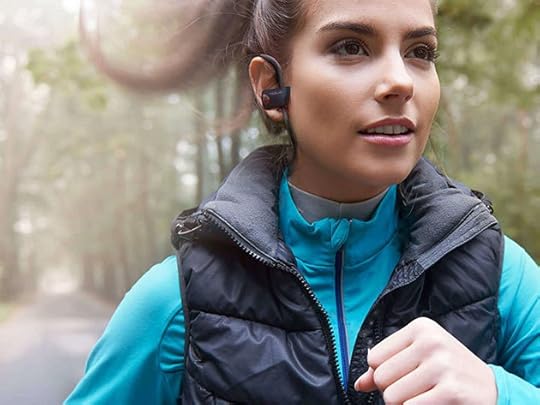
Kick your workouts (even the winter ones) into high gear with these TREBLAB XR500 Wireless Sports Earbuds. They fit securely in your ears, deliver nine hours of sound, and help you get into the zone without distractions thanks to passive noise cancellation and true HD sound.
Buy now: Get these sports-ready buds for $36.99, or 79% off the usual price of $179.99.
10. All-Terrain Sound: The World’s Most Experienced Speaker
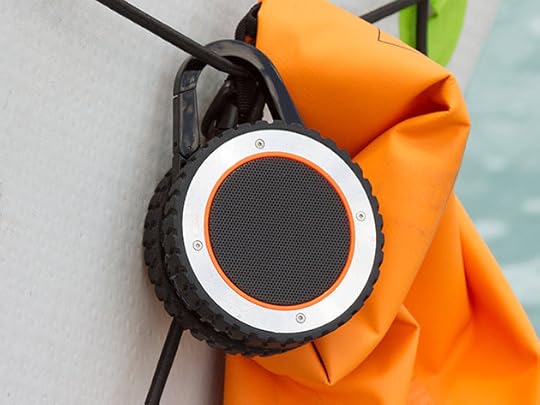
You can do anything with this All-Terrain Sound: The World’s Most Experienced Speaker – clip it to your bike as you hit the road or slip it in your bag as you hit the slopes, and you get 14 hours of incredible playback time. You can even drop it more than ten feet onto concrete and it’ll survive (really).
Buy now: Get this durable, portable speaker for $29.99, or 49% off the usual price of $59.95.
Don’t forget: use the code BFRIDAY20 for an extra 20% off the sale prices listed!
10 Black Friday deals you won’t want to miss out on

Forget lining up in the cold after stuffing yourself on turkey — stay cozy and warm and get your clicking finger prepped for these amazing Black Friday deals. From technology-forward gadgets to pragmatic charging cables, stylish smartwatches to plasma-beam powered lighters, we’ve got everything you need to be the best gift-giver this holiday season (even if you’re just filling up your own stocking).
1. Hover 4K Camera Passport Self-Flying Camera Drone

This Red Dot Design award-winning drone captures all your epic adventures and takes incredible photos — without you needing to maneuver it yourself. Thanks to facial recognition technology, you can effortlessly take 360º panoramic video of your next vacation, and even snap photos with your hand with automation technology.
Buy now: Get this innovative drone for $349.99, reduced from $499.99.
2. Glowing iOS Lightning Charging Cable

This practical and funky iOS charging cable is as fun as it is convenient. You can scope out your charging speed by observing the speed of the light flow: the higher the current, the faster the charge.
Buy now: Get this glowing cable for $9.99, or 50% off the usual price of $20.
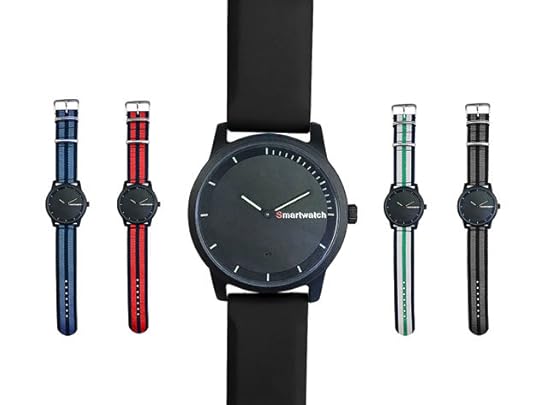
Sometimes smartwatches end up looking too much like what they do — but these hybrid smartwatchesfeature both elegant, classic timepiece design with smart technology. It’s the best of two worlds: you get fitness monitoring, notifications and the ability to take hands-free photos — all while effortlessly going from the gym to the boardroom.
Buy now: Get these slick smartwatches for $49, or half off the usual price of $99. Save an extra 20% off the sale price with coupon code: BFRIDAY20.
4. ROAV Eyewear: The World’s Thinnest Folding Sunglasses

You know those moments where you wish you had sunglasses, but never took the time to pack them away? These foldable, stylish sunnies offer maximum UV protection without cramping your fashion sense — that means you’ll always have a pair, right when you need them.
Buy now: Get these amazing-looking sunnies for $89.99, reduced from the original price of $145. Save an extra 20% off the sale price with coupon code: BFRIDAY20.
5. VEIU Mini Smart Video Doorbell
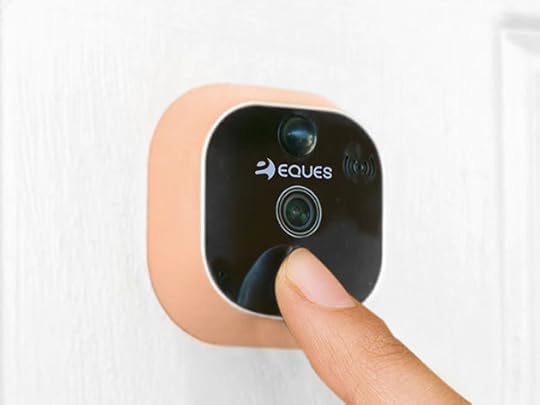
You don’t need an intense home security system to get a better hold over your safety: just use this smart video doorbell to keep an eye (literally) on who’s at your door. With the app, you can talk to who’s there, record the interaction and more — you get 100% visibility whether it’s night or day with infrared night vision, and stream video to your device using your home Wi-Fi.
Buy now: Upgrade your security for $149.99, reduced from $249. Save an extra 20% off the sale price with coupon code: BFRIDAY20.
6. SwissTek Double Layer Smart Umbrella: 2-Pack
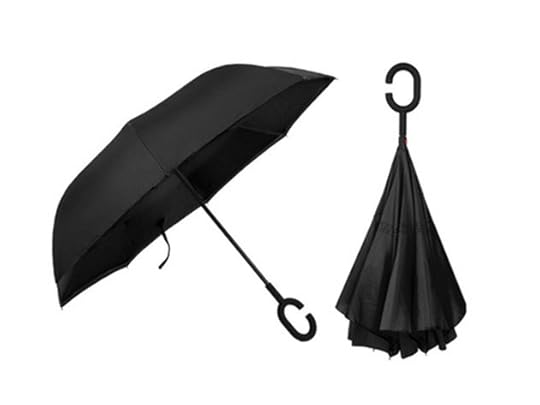
The weather’s getting chilly, meaning you’ll need the proper gear to keep you dry and comfortable when winter hits. These drip-free umbrellas feature an innovative reverse-folding design, opening from the top rather than the bottom. That means they’re windproof, drain effectively and thanks to UV fabrication, keep out harmful rays and rain alike.
Buy now: Get these innovative umbrellas for $33, or 76% off the usual price of $140. Save an extra 20% off the sale price with coupon code: BFRIDAY20.
7. SaberLight Rechargeable Flameless Plasma Beam Lighter: 2-Pack
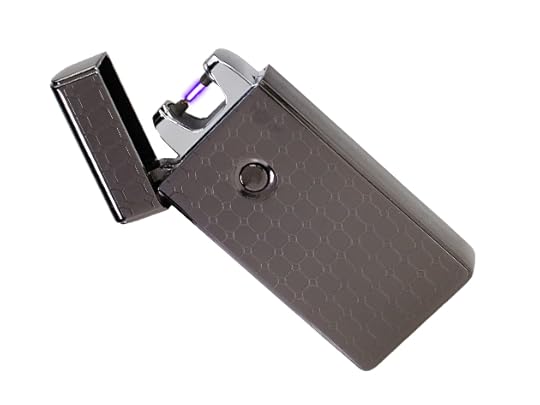
Stop wasting your funds on those terrible butane-powered lighters: plasma is the wave of the future, and these rechargeable, weather-proof lighters produce a flame that’s way hotter and more effective. They’re TSA-approved, nontoxic and completely rechargeable — and you can get up to 300 charges off a single charge.
Buy now: Get this electricity-generated lighter for $29.99, or 85% off the usual price of $199.98. Save an extra 20% off the sale price with coupon code: BFRIDAY20.
8. Hyperchiller Coffee Chiller: 2-Pack

Make perfect iced coffee without waiting forever for cold brew to steep, and without watering down a hot cuppa joe with ice. This innovative coffee chiller separates ice from coffee, so you can cool your coffee down without diluting it.
Buy now: Get this convenient chiller for $45 — that’s reduced from the original price of $60. Save an extra 20% off the sale price with coupon code: BFRIDAY20.
9. Genius Pack Aerial Hardside Carry On Spinner
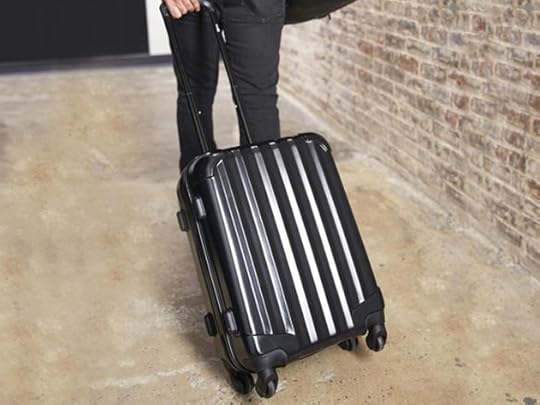
Make packing for holiday travel manageable with this maximum-sized carry-on rolling suitcase. The minimalist design keeps you organized from neatly designed interior compartments and an integrated packing checklist, while the 360º spinner wheels help you go through the terminal with ease.
Buy now: Get this convenient bag for $159.99, reduced from $248.
10. Emergency Multi-Function Radio & Flashlight

Be prepared for anything with this solar-powered/hand-crank operable multi-function radio. You can tune it to play AM, FM and WB radio, and even charge up USB devices with the onboard battery — it also includes a flashlight, just in case.
Buy now: Get this emergency-kit necessity for $18.99, or 78% off the usual price of $89.95. Save an extra 20% off the sale price with coupon code: BFRIDAY20.
November 22, 2017
Get early Black Friday pricing on the world’s smallest wireless record player

Got a bunch of amazing vinyl records lying around, waiting to be turned into wall decor? Stop! There’s a way to play your classic grooves in a cool new way, thanks to RokBlok: The World’s Smallest Wireless Record Player.
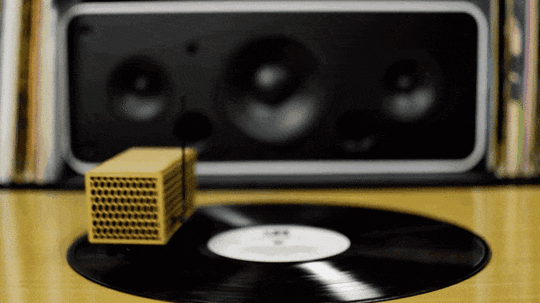
This tiny, adorable block replaces your turntable (but thankfully, not your vinyl): just lay it on your record, on any flat surface, and it’ll move along the grooves. You can start listening with the RokBlok solo thanks to the built-in speaker, or wirelessly send your music to any Bluetooth device for an even bigger sound.
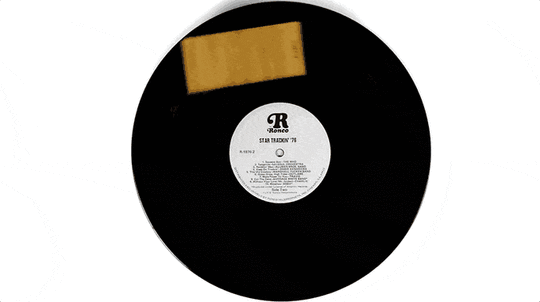
It’s totally portable thanks to its miniature size at just 2 x 4 inches long — meaning you can take it to your Friendsgiving, holiday party afterparty or gift-wrapping session. It’s totally an excuse to convert back to classic vinyl.
Rock out with RokBlok: usually, this innovative player is $99, but you can get it here for $89 — and you can get an extra 20% for Black Friday with coupon code, just for Salon readers: BFRIDAY20.
You should talk about politics this Thanksgiving

(Credit: AP)
After a whirlwind year of division and controversy in American politics, many of us may be anxious about dinner-table dialogue with family and friends this Thanksgiving. There is no denying that the way we communicate about politics has fundamentally changed with the proliferation of technology and social media. Twitter bots, fake news and echo chambers are just a few of the highlights from the political scene. Much of how we’re conversing online can’t – and shouldn’t – be replicated around the family table. We are getting out of practice at conducting meaningful, respectful conversation.
There’s not a quick fix. We need more empathic communication – the slow, deep (inter)personal discourse that can nurture identity and build and strengthen relationships. Yet contemporary communication platforms can make it harder to build empathy with conversational partners. Even the phrase “conversational partners” seems unfitting in the world of 140-character limits, followers, likes and shares. In many ways, our devices help us talk at (@?) instead of with one another.
Literally meaning “in-feeling,” empathy is a process of internalizing another person’s perspective. Empathy-building is unselfish; you suspend your own sensibilities and try to fully imagine and embrace those of someone else. You can gain empathy by learning about other cultures from different media, by experiencing what others have gone through personally, or by having deep conversations with others.
My research into cross-cultural communications has taught me that empathy is not only the key to feeling connected – “I understand you” – but also the foundation for changing our narratives about one another – “now I see we are not so different.” That’s an important point to remember after such a difficult political experience. Building empathy requires communication, specifically talking to one another. But, not just any talking will suffice – especially not the type of talking promoted by today’s highly popular communication technologies.
American disconnection
Americans are more digitally connected, yet less interpersonally connected, than ever.
For an increasing number of us, feeling connected – to family or otherwise – is becoming more difficult. A review of empathy research from the past 30 years revealed that college-age Americans were less able to imagine others’ perspectives and feel sympathy for their plight. The trend has been accelerating since 2000. At the same time, the number of Americans who report that there is no one with whom they discuss important matters nearly tripled, to roughly 25 percent of the population, between 1985 and 2005.
Technology may be part of the problem, making it harder for us to build and maintain strong relationships. It may be breeding increasing individualism, self-importance, loneliness, depression. The theories behind this link vary. In “Generation Me,” psychologist Jean Twenge argues that cellphone ownership – once a luxury for the elite – promotes illusions of grandeur. In “The Lonely American,” two psychiatry professors suggest that communication technology encourages us to remain physically isolated by providing remote connectivity. In “Alone Together,” social scientist Sherry Turkle offers that we are drawn to our devices more than to those in our presence. In “The App Generation,” information scholars Howard Gardner and Katie Davis claim that communication apps promote transactional rather than intimate exchanges.
Words matter
Talking is more than just exchanging information. Substantial personal communication can build empathy. Therapist Peggy Penn’s research has explored the power of language to connect family members in this way.
When you talk, or even write, you reflect on your own position. But, more importantly, you also reflect on the position of your audience: What is she currently thinking? How does my story fit into her experience? How might she respond? This is what Penn (referring back to philosopher Mikhail Bhaktin) calls “double-voiced” communication; it’s relational. Moreover, when you talk and write, you are crafting a narrative, even if a short one. Sometimes, you can surprise yourself when the words come out, gaining new insight into the meaning of your life and hers. In this way, talking can deeply change people, building and shaping mutual identities.
Yet, our written interactions through technology are increasingly short, with less sophisticated language or no language at all (think: Instagram). More and more, our thoughts are broadcast to everyone instead of intended for someone special. Back-and-forth exchanges can be difficult to engage in or follow. All of these may be playing into the tendency on social media to consume others’ content but not to directly communicate with friends one on one. The “double-voiced” communication that spurs empathy is short-circuited.
How to achieve empathy
We can improve our communication with each other, both face to face and via technology, if we focus on building empathy in the following ways:
Get personal. Make sure you are communicating in a private or semi-private space with one or a few dedicated others. This environment encourages self-disclosure and intimacy toward relationship-building. That’s different from seeking to impress others or be validated by them, as is often the case with social media postings. Further, in small groups or in one-on-one conversation, it becomes possible to imagine each others’ individual perspective. When your communication is focused on or intended for another person, it can catalyze empathic connection because you have to imagine and capture the other person in your text.
Write it down. Talking is great, but writing encourages more deliberate wording. Consider writing your thoughts out before you bring them up in conversation at the table. Or, if your face-to-face conversation did not go so well, consider writing a letter after the fact to better communicate your intentions. Personal writing is a form of self-reflection and narrative crafting. Simply writing your thoughts out can change them. This is why therapists sometimes recommend journaling or writing letters to your conversational partner as an intervention that encourages both partners to realign their perspectives.
Take your time. Whether you are engaged in a face-to-face dialogue or communicating through Skype or email, investing time into the conversation is important. The more time you spend in conversation, the more time you spend getting to know each other and the more able you are to share complex thoughts, relatable stories, or convincing arguments. From a linguistic perspective, without back-and-forth dialogue there is simply no opportunity to negotiate meaning and come to mutual understanding. For relationship therapists, without ongoing discourse, there is no way to try out new narratives, change your mind and theirs, and reconnect empathically.
When we have an opportunity to spend time with people who matter to us, we should embrace it, seeking to understand them and to present ourselves openly, to be understood as well. When we are apart, technology can be used to connect us. But, the types of technology we use and the ways we choose to use them really matter. When you’re at the dinner table this Thanksgiving, and especially when you go back home, keep empathy and the perspectives of others in mind.
 Editor’s note: This is an updated version of an article originally published Nov. 23, 2016.
Editor’s note: This is an updated version of an article originally published Nov. 23, 2016.
Stacy Branham, Lecturer of Information Systems, University of Maryland, Baltimore County
Sean Hannity’s long-standing defense of sexual abusers

Sean Hannity (Credit: AP/Carolyn Kaster)
Fox News host Sean Hannity has become a reliable ally for powerful men accused of sexual assault and harassment, regularly using his platform to discredit women who report sexual misconduct and cast doubt on their complaints. Here is a look back on the ways Hannity has attempted to undermine these women and defend the men who have been reported.
Roy Moore
Eight women have said Alabama Republican Senate candidate Roy Moore, a former judge of Alabama Supreme Court, sexually harassed or assaulted them, or had relations with them, when they were teenagers. The Washington Post first reported on November 9 that Leigh Corfman was 14 years old when Moore made sexual advancements toward her, and a number of women have since come forward with similar claims.
Hannity: Many women who report sexual harassment “will lie to make money.” [Media Matters, 11/9/17]
Hannity: “Then you have false allegations that are made, and — how do you determine? It’s ‘He said, she [said].’” [Media Matters, 11/9/17]
Hannity: “How do you know if it’s true? How do we — what’s true? What’s not true? How do you ascertain the truth?” [Media Matters, 11/9/17]
Hannity: “We do have Ten Commandments. One of the commandments is ‘Thou shalt not bear false witness.’ We know human beings break, with regularity, the other nine commandments. Did they break this one?” [Media Matters, 11/9/17]
Hannity: “But then also, are there false allegations? And when it’s ‘he said, she said’ or whatever, how do you tell the difference?” [Premiere Radio Networks, Media Matters, 11/9/17]
Hannity invoked the Duke Lacrosse team case; Michael Brown, who was shot by a white cop in Ferguson, MO; George Zimmerman, who fatally shot Trayvon Martin; and Freddie Gray, who was killed in police custody to suggest there’s a history of accusers lying. [Media Matters, 11/9/17]
Hannity: The “swamp,” “the sewer,” and the “establishment” are out to get Moore. [Media Matters,11/9/17]
Hannity: The Wash. Post “hates anything Republican, anything conservative.” [Media Matters, 11/9/17]
Roger Ailes
In July 2016, former Fox News host Gretchen Carlson filed a lawsuit against Roger Ailes, the now-deceased former Fox News CEO, alleging sexual harassment and retaliation against her when she would not have “a sexual relationship with him.” An additional 25 women also came forward with similar accusations. Reports later detailed startling revelations of Ailes’ attempts to cover up his sexual misconduct by spying on employees and silencing his accusers.
Hannity to Carlson: “Why did you stay after such ‘harassment’ asking for more airtime?” [Twitter, 7/13/16]
Hannity about Carlson: “Why did [Carlson] send handwritten notes with smiley faces asking for more airtime after the ‘alleged’ traumatic incident?” [Twitter, 7/13/16]
Hannity attacked accusations levied by Carlson as coming from a “publicity seeking” attorney. [Twitter, 7/9/16]
Hannity: “Hundreds of woman (sic) at Fox that I talked to” said all allegations against Ailes are “BS.”[Twitter, 7/9/16]
Hannity: “I have spoken to many woman (sic) who work at Fox that have the most amazing stories of how kind Roger is to them.” [Twitter, 7/9/16]
Hannity to Gabriel Sherman who reported on Ailes: “U r an Ailes and Fox stalker.” [Twitter, 7/13/16]
Donald Trump
In 2016, at least 20 women accused then-candidate Donald Trump of sexual misconduct, including 12 nonconsensual physical encounters. In October 2016, The Washington Post reported on a video clip in which a hot microphone caught Trump bragging to Billy Bush, then of Access Hollywood, “in vulgar terms about kissing, groping and trying to have sex with women.”
Hannity shrugged off accusations against Trump, arguing, “King David had 500 concubines for crying out loud!” [Fox News, Hannity, 10/7/16]
Hannity suggested that one of Trump’s accusers may have “welcome[d]” the sexual assault. [Media Matters, 10/13/16]
Hannity mocked one of Trump’s accusers: “Donald Trump groped me on a plane. It was all right for the first 15 minutes, but then he went too far.” [Media Matters, 10/14/17]
Hannity on Trump accusers: “Just saying ‘help’ would solve the problem.” [Media Matters, 10/20/17]
Hannity called accusations of sexual assault against Trump “an attempt to neutralize the WikiLeaks revelations,” referring to the stories generated from hacked Democratic emails. [Media Matters, 10/13/16]
Bill O’Reilly
On April 1, The New York Times reported that former Fox News host Bill O’Reilly and 21st Century Fox, Fox News’ parent company, paid out at least $13 million in settlements with five women who said O’Reilly harassed them.
Hannity gave O’Reilly a platform on his shows multiple times to attack the women who reported him. [Media Matters, 9/26/17, 10/5/17]
Hannity hosted disgraced former Fox host O’Reilly after he was fired from the network. [Media Matters, 9/25/17]
Clarence Thomas
In 1991, Anita Hill, who worked as a former aide to Supreme Court Justice Clarence Thomas during his time at the Department of Education and the Equal Employment Opportunity Commission, “submitted a confidential statement to the Senate Judiciary Committee alleging that Thomas had sexually harassed her 10 years earlier,” according to CBS News. At least two other women also accused Thomas of sexual assault.
While interviewing Thomas, Hannity referred to his accusers as “those that systematically went about destroying you.” [FoxNews.com, 10/3/07]
Hannity implied that Thomas was “an innocent man” who had had “his reputation destroyed forever.” [Premiere Radio Networks, The Sean Hannity Show, 11/10/17]
Hannity has praised Thomas for “giving one of the most powerful defenses” against sexual assault accusations. [Fox News, Hannity, 11/10/17]
Herman Cain
In 2011, at least two women reported that Herman Cain, who was at the time a candidate in the Republican presidential primaries, had sexually harased them during his tenure as the head of the National Restaurant Association in the 1990s.
Under a screen graphic that read “Herman hysteria,” Hannity questioned whether the charges were “politically motivated,” and badgered an accuser for “staying in the car” with Cain after she says she was harassed. [Media Matters, 11/11/11]
Hannity sought to discredit accusations against Cain and Justice Clarence Thomas, parroting their characterization of the charges as a “high-tech lynching.” [Politico, 11/10/11]
Hannity on Cain’s press conference denying sexual harassment accusations: “You would think this is going to end it.” [Media Matters 11/9/11]
Bill Shine
After Ailes was ousted in August 2016 amid mounting sexual harassment allegations, Fox News promoted Bill Shine to co-president of the network. As senior executive vice president, Shine had reportedly “played an integral role” in covering up sexual harassment claims, including those against Ailes. Shine had a role in pushing “women into confidential mediation [and into] signing nondisclosure agreements in exchange for their contracts to be paid” as well as in establishing a “counter-narrative” to discredit Carlson. He later resigned after reports surfaced that he was cited “in at least four lawsuits” that accused him of ignoring, dismissing, and even concealing sexual harassment allegations against Ailes.
Hannity: “Somebody HIGH UP AND INSIDE FNC is trying to get an innocent person fired.” [Twitter, 4/27/16]
Hannity: If Shine is fired, “that’s the total end of the FNC as we know it.” [Twitter, 4/27/16]
Hannity: “#Istandwithshine.” [Twitter, 4/27/16]
How to survive Thanksgiving if you have to spend it with die-hard Trump supporters

(Credit: Getty/Rawpixel Ltd)
For some of us, the approaching holidays are a time of dread. Beyond beloved traditions like overindulging on food, alcohol and shopping, for some people, it’s inevitably a time when they will clash with loved ones over politics. Plenty of Americans have family members with opposing political views, and Trump has made these divisions even more severe. If progressives are having trouble understanding the conservatives in our own families, how can we begin to empathize with Trumpers who don’t share our blood?
The sharp division in beliefs among Americans today has prompted some to search for solutions. Meet Narrative 4, which was launched five years ago with the goal of spreading the practice of “radical empathy” across the world using the act of storytelling. As the group’s founder, author of Let The Great World Spin Colum McCann, says, “every story has a place, even the stories we don’t like.” McCann proposes radical empathy as a way to actually make people listen to one another.
Those who live near or on college campuses may recognize the term, as radical empathy has taken off in universities in recent years. It entails literally placing oneself in another’s shoes by living in a person’s house, shadowing them or otherwise initiating close contact. Radical empathy means knocking down the walls that exist between yourself and another person to better understand them.
Narrative 4 brings radical empathy practice to schools, universities and workplaces in the form of workshops where participants follow a simple story exchange. Partners A and B share a story with one another; then, Partner A tells Partner B’s story to a group using the first person, as if B’s experiences actually happened to A. Then the two switch. Participants in Narrative 4’s radical empathy story exchanges say they often feel changed after the experience. “It’s changed my life for the better,” said Narrative 4 student ambassador Alondra Marmolejos. “It’s such a positive and beautiful thing.”
In these divisive political times, empathy is a more important skill than ever. Lee Keylock, Narrative 4’s director of global programs, agrees that using empathy to understand different political views is hugely important: “It’s one of our biggest priorities this year — it’s why our phones are ringing off the hook.”
While the group focuses on the exchange of stories individual-to-individual, their work frequently resonates with the larger project of spreading political empathy across parties. Perhaps their most well-known project is a collaboration with New Yorker Magazine last year, when Narrative 4 brought together a group of individuals with drastically opposing views on one of the most divisive issues in the U.S. today: gun control. Participants in the gun control radical empathy session included a prominent Second Amendment advocate, members of the police and Marines, a parent of Sandy Hook victims, and Samaria Rice, mother of Tamir Rice.
“People crave discourse,” said Keylock. “Debate isn’t the only way to go.”
Much of Narrative 4’s radical empathy practice focuses on students and young people. “It’s easier to get them when they’re young because they come with this fresh, open-minded attitude,” said Keylock. “They find they’re very similar to each other. Wheres as adults have had more time to become cynical. They think they need to be guarded.”
But older progressives can bring the practice into their own lives, too. “When I look at the news right now, there’s lots of shouting and name-calling and vilifying on both sides, and that includes the Democrats,” said Keylock. “When you start labeling people as an ideology, you’re not really seeing them as a person. Let’s face it, not every conservative voice is what they’ve been charged within the media, which is homophobic, racists, Islamophobic. That’s just not the case. There are narratives out there that are being missed, so you need to have an open mind.”
Since the 2016 election, a popular explanation for the surprising wave of Trump votes is that Trump tapped into fears and concerns of the white working class that Democrats have long ignored. Whether you give credit to that storyline or not, it seems true that Trump supporters felt their stories weren’t being heard or represented by the mainstream media, and in Trump, they saw a voice they believed would speak for them, misguided as that belief may seem. Keylock agrees with this analysis. “In my experience, one of the hardest voices to bring to the table is the conservative voice. Conservatives are a little scared to speak out because they feel like they get shafted.”
He continues: “What happened is that because of all the labeling, people like to dig their heels in the sand. If you ask a political question, people have their argument ready to roll. We don’t do that; we get people to share their personal stories, and we get them to sort of become lovestruck with each other. It’s amazing what happens. We get to some really deep places. We’ve started friendships among these political divides.”
He said hundreds of Narrative 4 story-exchange participants with opposing political views later become Facebook friends and now frequently defend one another’s political posts. It’s incredible to imagine people with different beliefs behaving civilly on the internet, where the cloud of anonymity turns humans into trolls. But Keylock says he’s seen it happen many times.
Narrative 4 does not claim to have a 100 percent success rate when it comes to healing divides. Sometimes, two people can be so different in terms of their life experiences it’s simply impossible for them to empathize with one another. “Usually on the issue of guns,” Keylock said. “It’s very contentious. Sometimes it’s not the right time to bring people into a room together to do it—if you’ve lost a kid to gun violence, it’s hard for that person to even entertain the idea. On those issues, you need to give it more time. The more times you bring people together, the more success you have.”
But, Keylock continued, “Honestly, I’ve very rarely seen the impossible. Political divides can be turned around really quick.”
Keylock also shared advice for those of us with Trump supporters in our families as the holidays approach. “Empathy takes a massive amount of courage, even though it’s considered a soft skill. We have to be vulnerable, be ready to let go. You have to listen to what somebody is saying. That doesn’t mean accept it blindly, but you learn nothing from talking and everything from listening. All people’s stories matter.
“Go in, open your ears, watch your tone. Then tell them your story. A lot of these conversations are bred from fear and ignorance. That turns into hate later. But empathy is about being vulnerable and courageous, and listening and being present. Those are leadership skills. If you can’t do that, how can you lead your conversation forward?”
Also: “Breathe, meditate.”
How “Planes, Trains and Automobiles” redefined Thanksgiving
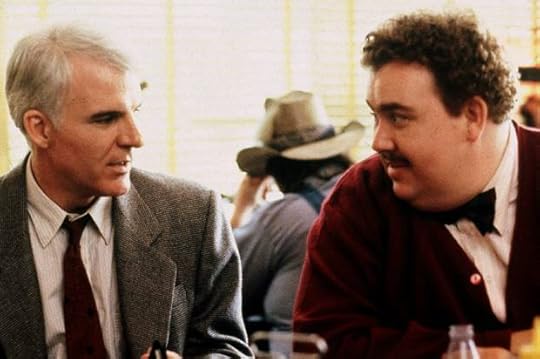
Steve Martin and John Candy in “Planes, Trains & Automobiles” (Credit: Paramount Pictures)
“Planes, Trains and Automobiles” is the best Thanksgiving movie of all time. That’s a thigh bone rather than full bird of a statement, as the film, which turns 30 on Saturday, has been making “Best Thanksgiving Movies” lists pretty much its entire life. But in looking at its listmates and what we usually mean when a movie becomes part of an annual holiday celebration, “Planes” isn’t sitting at the same table — it’s rebuilding it in the garage. Instead of playing the holiday’s rituals for drama or laughs or riffing on the spirit we think the occasion embodies, “Planes” tells a deceptively simple story that re-imagines the meaning of the holiday that surrounds it. “Planes, Trains and Automobiles” does for Thanksgiving movies what “Trading Places” and later, “Die Hard,” would for Christmas movies, if “Trading Places” and “Die Hard” resulted in late December becoming the time of year to corner the market on frozen orange juice futures or rescue hostages from a seized office tower.
“Planes, Trains and Automobiles” departs with a story choice so obvious that it feels like a master class — two great comedians with great chemistry in a situation that plays to their inherent gifts — instead of a revelation. It stars Steve Martin and John Candy playing themselves trying to get home from New York City to Thanksgiving dinner in Chicago. Everything that can go wrong does. Neal Page (Martin) is an uptight advertising executive whose relentless business travel has become a way for him to interact mainly with strangers rather than live with any real intimacy. (“Spending time with him is like being alone,” said Tom Smothers, an early comedic mentor of Martin in real life.) Del Griffith (Candy) is a salesmen who does the same, in part to turn strangers into friends, but as a way of running from a longstanding hurt at home. (“All he wanted to do was make people laugh, but sometimes he tried too hard, and he hated himself for doing that,” wrote Roger Ebert of the real-life Candy.)
The two meet on Fifth Avenue, trying to get to the airport when Del steals Neal’s cab by accident. They end up stuck together on a two-day odyssey of bad luck, learning from one another thanks to blizzards, faulty commuter rails, rental car mishaps and pretty much any travel misfortune and indignity you can imagine, circa the early winter of 1987. All praise due to the screenplay by John Hughes (who also directed) that “Planes” still largely holds up in present travel conditions of finding a last minute Airbnb when stranded or Uber-ing your way out of delays. When six feet of snow drops in as many hours, stuck feels like stuck no matter where or when you are.
The condition of being stuck far from the comforts of home is a perfect catalyst for the styles of both comedians. Martin is all loose-limbed exasperation as bad luck keeps shoving him into soggy beds and scalding motel showers he can’t buy his way out of. Candy’s oversized frame and mismatched multi-layered outfits betrays a man at home with the anonymity of airport gates and train depots but uneasy sitting still with real conversation. Like his sweaters, his jokes are loud and overly-friendly. Initially it makes “Planes” an effortless comedy with its most quotable moments — Martin giving a perky rental car agent (Edie McClurg) a monologue of f-bombs, Candy offering to make up for stealing Martin’s car via a list of airport sundries — coming from its two stars slam dunking what they already do best.
Hughes’s plainspoken, naturalistic dialogue helps without prodding them along. “Planes” feels different than his two biggest movies up to this point — “The Breakfast Club” and “Ferris Bueller’s Day Off” — which seem written to produce at least one quotable zinger per scene. All three films are about ordinary people on extraordinary days of their lives and often, extraordinary times of year, favorite themes of the late filmmaker. This was a somewhat personal film — Hughes wrote “Planes” to celebrate his young family moving back to his beloved Chicagoland area after four years in Los Angeles. He had two of the greatest living humorists as his leads. Call it artistic maturation (“Planes” was the first film he directed about adults and family rather than teenagers) or simple good luck, but “Planes, Trains and Automobiles” is so front-loaded with fortunate circumstances — two superstar comedians playing themselves trying to get home to the city that the director called both inspiration and home on the week all of America wants to go home to places they love — that Hughes could have steered right into what he had and called it day.
And we would have a nice Thanksgiving movie, maybe even a listmate of the “Planes” we ended up with, but not the best living example of the genre. Because wrapped around this perfectly workable Thanksgiving road trip comedy is its adversary: a setting cold and vast instead of cozy and intimate, centered on the personal drama of strangers instead of family members with each other, a road trip story with Thanksgiving dinner as the destination that never quite gets there. (I’m spoiling nothing by saying that the Thanksgiving dinner Martin and Candy ultimately come home to happens off screen after the movie is over).
If the road trip is among our most American movie format genres, “Planes, Trains and Automobiles” allows itself almost none of its gifts: the road here doesn’t lead to freedom but vulnerability, Del and Neal don’t chose the journey but it instead holds them captive. If Thanksgiving is among not only our most American holidays but also our most deliberate — the whole country travels to a designated place for a traditional meal at a designated time — “Planes, Trains and Automobiles” is rather a story about chance, about a friendship born when two people hiding inside their skin are brought out of it by being stranded with one another.
We see these two movies becoming one in its best known scene. Martin yells at Candy for being a slobby motormouth with the social skills of a talking Chatty Cathy Doll, then mimics pulling a string on his chest. It’s vintage Steve Martin, hilarious except Hughes keeps his camera on Candy whose face goes from indignant to wounded to painfully real in seconds. And when he speaks to defend himself — “You’re right. I talk too much. I also listen too much. I could be a cold-hearted cynic like you. But I don’t like to hurt people’s feelings” — Hughes reverse shots to Martin’s face in closeup, eyes closed, head tilted down in humiliation. He’s been a jerk to the one person who actually cares about him getting home as much as he does and is in a position to actually do something about it.
If Thanksgiving is a celebration of family, bounty and gratitude for what we have, its shadow is a painful recognition of what we don’t and how we have been complicit in keeping it away. In “Planes, Trains and Automobiles,” the holiday of gratitude doesn’t make Neal and Del thankful but humble and self-aware. Family in this movie is just not the finish line but a reminder of how the two men have fallen short and contributed to their own unhappiness. It’s happy ending comes only after a terribly sad moment when Neal realizes what Del has actually been coming home to, Del admits why he wasn’t truthful with Neal about it and Neal realized that this honesty and vulnerability is exactly what his own life lacks. Their joint homecoming is discovering what they’ve been missing is what the other is at his core.
What makes for a great holiday movies? Does it embody its rituals (“National Lampoon’s Christmas Vacation“), its spirit (“It’s a Wonderful Life,” which was released in January of 1947 and became a yuletide classic a full 30 years after that) or strike the holiday against its theme like a tuning fork? (If there’s a greatest ever Labor Day weekend movie, “Stand By Me,” about the hard realities of growing up and losing childhood friends, is it.) In the case of “Planes, Trains and Automobiles,” it’s taking what Thanksgiving and therefore movies about it are — cinema, as a populist art, is rarely in a position to present a holiday as anything other than our conventional readings of it, which is why movies set on New Year’s Eve will never lack champagne and countdowns and the characters saying “next year will be different” — and using it as a counter to tough, firm questions. What if warmth, home and togetherness are a reminder of the very things we have kept from ourselves?
Even though the majority of beloved Thanksgiving movies concern themselves with meal prep before (“Pieces of April”), family drama during (“Home for the Holidays,” “House of Yes”) or dealing with old hurts after (“The Big Chill,” “Hannah and Her Sisters”), and even if a road trip with turkey dinner as destination instead of centerpiece isn’t unique to “Planes” (“Scent of a Women” would go there in 1992) or even its director (the Hughes-scripted “Dutch” in 1991), all Thanksgiving movies are, in the end, about coming home. It’s the least varied of the holiday genre categories, if we recognize that films now considered “Christmas Movies” can just happen to take place around Dec. 25 (“Die Hard“), Fourth of July movies are always about freedom and America, but that encompasses a whole lot (Imagine “Mr Smith Goes to Washington” and “Independence Day” on the same best-of list, because it happens all the time) and Garry Marshall’s late-in-life holiday trilogy (“Valentine’s Day,” “Mother’s Day” and “New Year’s Eve”) were a release-date gimmick more than anything else.
“Planes, Trains and Automobiles” is the modest, brilliant exception that proves the rule: In the story of Neil Page and Del Griffith, on its face a very funny, silly comedy about the mishaps of trying to get home to Thanksgiving dinner during a blizzard, we actually get a story that reframes the ritual of Thanksgiving itself as a homecoming, not to one’s family but one’s self, to the idea that in order to be thankful for what we have, we have to first be open to letting people be thankful for what they see in us.
How to talk politics at the Thanksgiving table
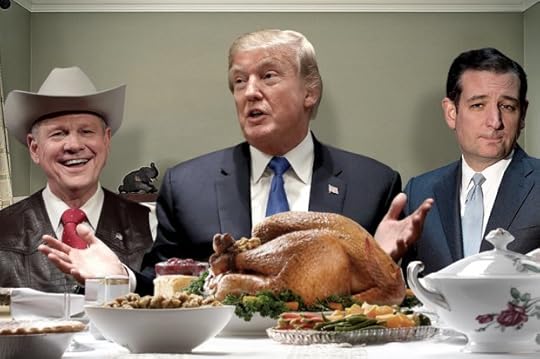
(Credit: AP/Getty/Salon)
When you think about Thanksgiving, certain holiday staples inevitably come to mind. A juicy turkey. The gleeful shouts of playing children. A loud football game playing in the background (with the Detroit Lions probably losing). And political conversation. Awkward, awkward political conversation.
Considering that American politics have always been intensely polarizing, it makes sense that heated political disagreements will arise among impassioned family members when they’re gathered for a big holiday. But is there any way to keep those conversations civil?
“Don’t use liberal or conservative, Republican or Democrat. No generalization. No absolutes,” Pete Dominick, a comedian and host of SiriusXM’s “Stand Up With Pete Dominick,” told me on “Salon Talks.” “That stops the conversation. If I find out you’re a conservative, I’ve decided everything about what I think you believe. And that’s no good.”
This advice is certainly a welcome way to start. If these conversations are going to happen no matter what — and let’s be honest here, that is frequently the case — then at the very least it helps to establish ground rules that will prevent either side from feeling unfairly stereotyped.
It also helps to make sure no one feels attacked.
“Listen, we’re in the room together. We gotta be here for the next three hours. I decided it was worth it to bring my family to Thanksgiving at your house, knowing that you were gonna be here, because there’s other people I can tolerate,” Dominick said. “The conversation’s gonna come up, I’m ready to tangle, as long as it doesn’t get too personal with name-calling.”
In addition to making sure no one feels attacked, it is also important to make sure that people who insist on political arguing at least abide by certain ground rules. Back in August, I wrote up a series of rules that reduce the likelihood of people using bad sources or poor logic to present and defend their positions. If both parties in a debate can abide by common sense principles — such as using reliable sources and not turning their opponents beliefs into straw man arguments — then that abiding sense of fairness can win the day for both sides in a debate.
Watch the video above to learn how to have debates that remain substantive at all times. And, check out my full conversation with Dominick on Facebook to hear what he’s learned from having an open mind and listening to a diverse range of perspectives on political issues.
Tune into SalonTV’s live shows, “Salon Talks” and “Salon Stage,” daily at noon ET / 9 a.m. PT and 4 p.m. ET / 1 p.m. PT, streaming live on Salon and on Facebook .
This is the only Thanksgiving documentary actually worth a damn

"The Pilgrims" (Credit: PBS)
Like the reality of what we would call the first celebration of the holiday, the best Thanksgiving documentary available, Ric Burns’ 2015 PBS film “The Pilgrims,” is cold, deadly and quite a bit more about religion, invasion and chilling tales of hand-to-mouth survival than it is about hearthstone bonhomie between settlers and Native Americans. Baked yams with syrup it’s not.
It is, though, a beautiful and necessary exercise in unweaving our calcified national-origin myths — those of the Pilgrims, Thanksgiving and America itself — one that eventually grabs all that loose yarn and with them recreates something whole, revived and, for once, true. With America’s comprehension of itself currently strained by polarized ideologies, fake news and quarter truths this season, it’s the only documentary that even touches on Thanksgiving that is worth viewing.
For starters, it fully and profoundly impresses upon the viewer that the curious slice of history that we have chosen as the moment of our nation’s birth is not one of easy communion, of home fires and stuffing. It is a tale of basic survival, broken ideals and failed dreams, though one with a partially happy ending. Correspondingly, “The Pilgrims” is, much like Burns’ 1992 masterwork “The Donner Party,” haunting and haunted on all fronts, alternately enchanting and dire (and often both at the same time).
Over two hours, Burns carries the ragged group we come to know as the Pilgrims, from their origins as a radical religious sect in Nottinghamshire, to industrious expats in Holland, to woefully underprepared adventurers and settlers on the American Northeast’s stony shore.
There are no rose-colored glasses here. The Puritans appear as principled, educated people you most certainly would not want to invite over to dinner, let alone settle a frontier with. They are upstanding, but intolerant, and such wide-eyed ideologues that they rested on God to help them cross the Atlantic instead of common sense (their fully disorganized planning almost cost them their lives before they reached Plymouth).
These harsh realities quickly turn from comedic to horrific, once they reach the shores of Plymouth Bay. The travelers are only able to stake out a prime spot near the water because the local Native American population had been devastated by a Ebola-like epidemic brought by European fishermen years earlier. Patuxet — the village that the English would name Plymouth — was an open plague grave, and the settlers’ first taste of native foods came from the stores left behind by the dead.
Mass death by illness, starvation and suicide begins even before every settler has disembarked from the fetid hold of the Mayflower. Onshore, the community barely survives a harsh New England winter. There’s a macabre reason so few of the many who died that season have proper graves. (Spoiler: it wasn’t cannibalism. Yay!)
Even as the Plymouth Plantation rises to its feet, it loses its leader and dips into conflicts with the local tribes that will, in a generation’s time, turn into bloody war. The specter of future genocide haunts “The Pilgrims” at all times. Add to that the fact that the Puritan’s pilgrimage was corrupted from the outset (a good portion of those who came over on the Mayflower were seeking beaver pelts, not salvation), and it’s a historic bummer.
And, yet, there’s a sweet and defiant humanism at work alongside all these moments that seem plucked from “The Revenant,” most of them delivered by the surviving testimony of Plymouth leader William Bradford.
The words of the plantation’s governor and unofficial poet laureate anchor “The Pilgrims,” revealing a mind keenly aware of the failure of the group’s initial efforts, yet absolutely steadfast in its faith in a vision of a New World. Played beautifully by the late Roger Rees — who gritted through terminal cancer to finish the production — his hard pragmatism with boundless idealism positions Bradford as the first true American writer and his “On Plymouth Plantation” the first true American text.
Not to spoil much or give away the great turnaround of “The Pilgrims,” it is through his words that this near-forlorn colony becomes something mythic, something integral to our understanding of ourselves. Rees’ quiet, yet inflamed, portrayal of him does the same for the film.
So, yes, Burns stains our childhood images of Pilgrims breaking bread with the Wampanoag with starvation, disease, genocide, incompetence and a form of Christianity almost entirely alien to most Americans. Yet he presents those maladies and the plantation’s first stabs at democracy as the ghosts of things to come, making the story of these “first Americans” a diorama of all American history. More importantly, he frames Bradford’s constant focus on the horizon, on the future, as the beginning of the American mindset.
Throughout, Burns breaks down the falsehoods of our national-origin myth, revealing how — in ways you may not expect — that moment was indeed our birth, for better or worse.
In all its detailed coverage, the idea of a “first Thanksgiving” speeds in and out of “The Pilgrims,” presented only as a general likelihood rather than a historical fact. But, hey, given that — as the film says — Thanksgiving didn’t really begin in earnest until the Lincoln administration forwarded it as a mid-war morale booster some 242 years after the English Puritan settlers maybe, possibly broke bread with the Wampanoag near the shores of Plymouth Bay, that’s only appropriate. Burns calls bullshit on the myth, then gives you enough cheer and hope to down another plate of stuffing.
Right here, right now, this deft ability to pair brutal honesty and generosity makes “The Pilgrims” something more than a seasonal diversion. It may be a necessary one.
“The Pilgrims” is available for streaming on Amazon Prime.




